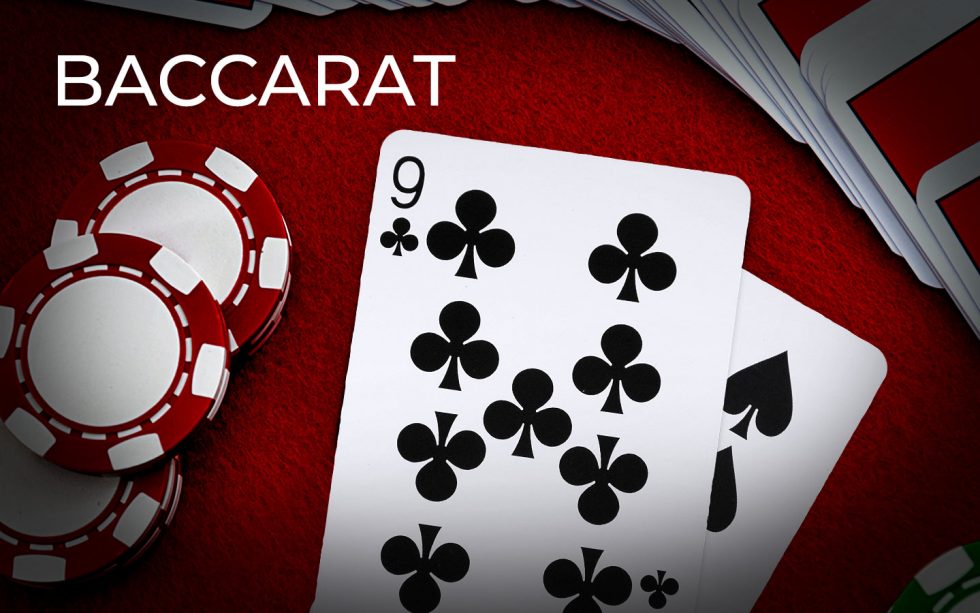Introduction to Baccarat
Baccarat is a classic casino game that traces its roots back to Italy in the 15th century. The game later migrated to France, where it became popular among the nobility. Today, Baccarat is enjoyed worldwide and is known for its elegance and simplicity. There are several versions of Baccarat, but the most common ones are Punto Banco, Chemin de Fer, and Baccarat Banque.
Objective of the Game
The primary aim of Baccarat is to bet on whether the Player or the Banker will have a hand value closest to nine, or if both hands will tie. Here’s a closer look at how hand values are calculated:
- The highest possible hand value is 9.
- If the total value exceeds 9, only the last digit of the total is considered (e.g., a hand totaling 15 is actually worth 5 points).
Understanding the Cards and Their Values
Each card in Baccarat has a specific point value:
- Aces: Valued at 1 point.
- Number Cards (2-9): Valued at their face value.
- 10s and Face Cards (Jack, Queen, King): Valued at 0 points.
For example, if a player is dealt a 7 and a 6 (totaling 13), the hand value is 3.
How to Deal Cards
In a standard Baccarat game:
- Two hands are dealt: one for the Player and one for the Banker.
- Each hand initially receives two cards.
- The values of the two cards are added together to get the total value of the hand.
If either the Player or Banker has an initial total of 8 or 9, this is called a “natural” and no further cards are drawn. If not, the game continues as per the third card rule.
The Third Card Rule
The third card rule can be intricate but essential:
For the Player:
- If the Player’s total is 0-5, the Player draws a third card.
- If the total is 6 or 7, the Player stands.
- If the total is 8 or 9, it’s a natural, and no more cards are drawn.
For the Banker:
- If the Player stands (i.e., has 6 or 7), the Banker draws a third card if the Banker’s total is 0-5 and stands on 6 or 7.
- If the Player draws a third card, the Banker’s decision to draw is based on the Banker’s total and the Player’s third card. Here’s the detailed rule:
- Banker’s total 0-2: Banker always draws.
- Banker’s total 3: Banker draws if Player’s third card is 0-7 or 9 (not 8).
- Banker’s total 4: Banker draws if Player’s third card is 2-7.
- Banker’s total 5: Banker draws if Player’s third card is 4-7.
- Banker’s total 6: Banker draws if Player’s third card is 6-7.
- Banker’s total 7: Banker stands.
How to Bet
Before dealing the cards, players place their bets on either:
- The Player’s hand winning.
- The Banker’s hand winning.
- A tie occurring.
Betting Options:
- Player Bet: Pays 1:1.
- Banker Bet: Pays 1:1, but a 5% commission is deducted (hence 0.95:1).
- Tie Bet: Typically pays 8:1 or 9:1, but this varies by casino.
Payouts and House Edge
Understanding the house edge is crucial for informed betting:
- Player Bet House Edge: Around 1.24%.
- Banker Bet House Edge: Around 1.06% (due to 5% commission).
- Tie Bet House Edge: Can be as high as 14.36%, making it less favorable despite high payouts.
Strategy and Tips
Basic Baccarat Strategies:
- Bet on the Banker:
- Statistically, the Banker’s hand wins more frequently.
- Due to the 5% commission, it maintains the lowest house edge.
- Avoid the Tie Bet:
- Despite the enticing payout, the high house edge makes it less advantageous.
- Money Management:
- Set a budget and stick to it.
- Determine your win/loss limits before playing.
Advanced Strategies:
- Pattern Spotting:
- Some players attempt to recognize patterns in the game outcomes.
- Note: Each hand is an independent event, so patterns do not guarantee future outcomes.
- 1-3-2-4 Strategy:
- A progressive betting system aimed at maximizing winnings and minimizing losses.
- Increase bets after wins and return to the base bet after a loss.
Variations of Baccarat
Classic Baccarat (Punto Banco)
Basic Rules:
- Objective: The goal is to bet on the hand that you think will have a total value closest to 9.
- Card Values:
- Aces = 1 point
- 2-9 = face value
- 10s and face cards (Jack, Queen, King) = 0 points
- Bets: Players can bet on Player hand, Banker hand, or a Tie.
- Dealing:
- Two hands are dealt: one for the Player and one for the Banker.
- Both hands receive two cards.
- Third Card Rule: This rule dictates whether either hand draws a third card.
- Player Hand: If the total is 0-5, the Player draws a third card. If it’s 6-7, the Player stands.
- Banker Hand: The Banker’s action depends on the Player’s third card and the Banker’s current total.
- Winning:
- The hand closest to 9 wins.
- If a bet was placed on:
- Player: Payout is 1:1
- Banker: Payout is 1:1 minus a 5% commission
- Tie: Payout is typically 8:1 or 9:1
Chemin de Fer
Basic Rules:
- Objective: Identical to classic Baccarat – the aim is to bet on a hand that total closest to 9.
- Card Values: Same as in classic Baccarat.
- Setup:
- Involves multiple players (generally up to 12), who take turns being the Banker.
- The Banker’s role rotates counterclockwise around the table.
- Dealing:
- The Banker deals four cards: two to the Banker and two to the Player.
- The Banker and Player compare their hand totals.
- Third Card Rule:
- The Player has the option to stand or draw on 5.
- The Banker can draw or stand based on the Player’s decision.
- Winning:
- Similar winning conditions as in classic Baccarat.
- Players may place higher stakes and challenge the current Banker.
Baccarat Banque
Basic Rules:
- Objective: Same as other variations – bet on the hand closest to 9.
- Card Values: Same as in classic Baccarat.
- Setup:
- Played with three decks of cards.
- The role of the Banker is more permanent than in Chemin de Fer; it’s usually more fixed and longer-lasting.
- Dealing:
- Player hands are often referred to as the “Punter.”
- Two hands are dealt for the Punter and one hand for the Banker.
- Third Card Rule:
- The Banker’s decisions for taking a third card may be more strategic compared to other variations.
- Winning:
- Similar winning conditions as in classic Baccarat.
- High stakes are more common, with players allowed to lay bets against each other.
Mini Baccarat
Basic Rules:
- Objective: Same as other variations – bet on the hand closest to 9.
- Card Values: Same as in classic Baccarat.
- Setup:
- Generally played at a smaller table with 7 players.
- Played faster, with fewer formalities.
- The dealer handles all the cards.
- Dealing:
- Two hands are dealt: one for the Player and one for the Banker.
- The dealer automatically deals any third cards if necessary.
- Winning:
- Similar winning conditions as in classic Baccarat.
Variations in Gameplay and Strategies:
- Player Strategies:
- Flat Betting: Betting the same amount every hand.
- Martingale System: Doubling the bet after each loss.
- 1-3-2-4 Strategy: A sequence-based strategy to balance risk and reward.
- Banker Strategies:
- Bankers usually follow specific rules regarding when to draw a third card to maintain an edge.
- Table Etiquette:
- Players are expected to adhere to table etiquette, such as not touching cards in a live game (except in Chemin de Fer) and placing bets within the allotted time.
Conclusion
Baccarat, with its rich history and simple yet engaging gameplay, remains one of the most beloved casino games worldwide. Whether you’re drawn to the elegance of classic Baccarat (Punto Banco), the strategic complexity of Chemin de Fer, or the high-stakes action of Baccarat Banque, each variation offers its unique charm and challenges. Understanding the detailed rules and nuances of these variations can significantly enhance your gaming experience and appreciation for the game’s depth. From casual players enjoying the quick pace of Mini Baccarat to seasoned gamblers delving into the strategic depths of Chemin de Fer and Baccarat Banque, Baccarat caters to a wide range of preferences and skill levels. Whichever version you choose, the game promises an exciting blend of chance and strategy that has captivated players for generations.

